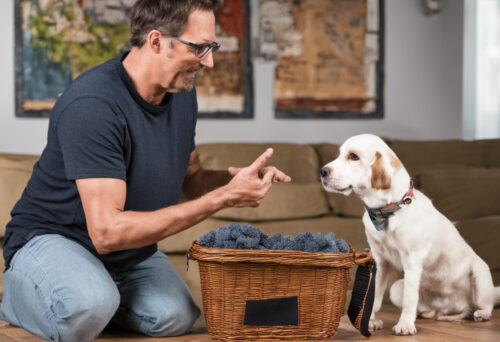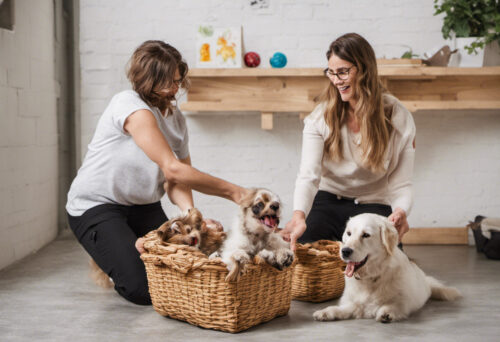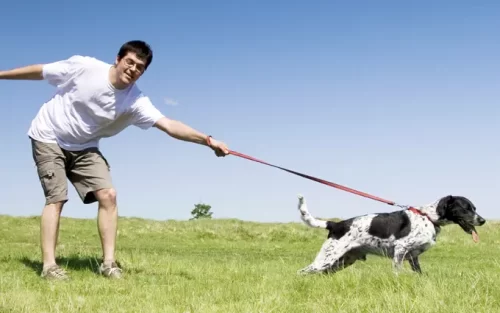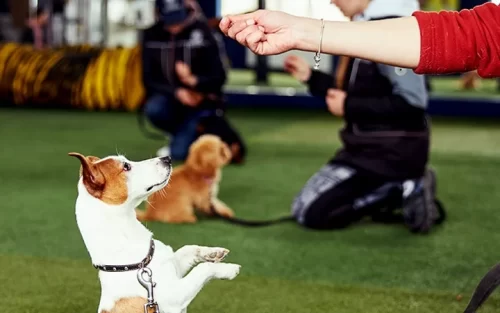As a proud dog parent, equipping your canine companion with the necessary commands is vital for their safety and social skills. Among these, ‘take it’ and ‘drop it’ rank among the most crucial yet somewhat challenging commands to teach. Not only do these promote obedience, but they also save Fido from potential danger and often reduce behavioural problems. This handy guide will take you by the paw through the process of teaching these commands, so rest easy; you’re in good hands … or should we say, paws?
Taking The First Leap: Understanding ‘Take It’
The American Kennel Club explains ‘take it’ as a command that asks your dog to politely accept a given object with his mouth. A piece of doggy delicacy, a toy, or occasionally a piece of your clothing getting caught in a playful tug-of-war. Hence, ‘take it’ forms the initial part of our two-step instruction.
Dishing Out the Command
According to the Dogtime, start by getting your pup’s attention. You can do this by shaking a toy or a treat, calling out their name or through direct eye contact. Once you have their attention, say the words ‘take it’ as you offer them the object. Be patient and consistent and soon they should start associating the phrase with the action.
Retracting Gently: Mastering ‘Drop It’
‘Drop It’ is the opposite of ‘take it’. It’s asking your pup to let go of what’s in their mouth. The VetStreet advises that this command is just as crucial as ‘take it’, and not merely for play purposes. Imagine your fur-baby picking up something harmful. A timely ‘drop it’ command could potentially be a lifesaver.
The Giving Art of ‘Drop It’
The Rover advises trading out something of equal or higher value to make your dog willingly comply with ‘drop it’. If your pooch isn’t too enthusiastic about parting from their object, showing them a treat or another equally exciting object seemed to work wonders. Give the ‘drop it’ command, and when they let go, reward them with what’s in your hand.
Remember, mastering these commands can take time and repetition. It might take a bit of patience but, seeing your four-legged buddy shred their new training with joy, the effort would all be worth it!

The Stages of Command Training
As every dog owner knows, training our furry friends isn’t accomplished overnight. Just like you would reward a child for accomplishing a difficult task, a dog works best under the motivation of rewards. This leads us to the first of our two stages: positive reinforcement.
Stage 1: Positive Reinforcement
The concept of positive reinforcement revolves around the idea of providing a reward – it could be a treat or a cherished toy – for a behaviour you want to encourage. The Spruce Pets suggests keeping the rewards varied as it makes the learning process more engaging for our pups.
As per suggestions from UC Davis School of Veterinary Medicine, the best time to administer a reward is immediately after your dog performs the desired action, in our case, after they ‘take it’ or ‘drop it’. This will ensure they associate the action with the reward, eventually performing it instantly upon hearing the command.
Stage 2: Practice Makes Perfect
As with any new skill, repetition is key to fluency. Practice the commands with your dog at different times of the day and in varying settings. Teaching them ‘Drop It’ when they’re playing with their favourite chew toy or practicing ‘Take It’ with fun new toys from BarkBox keeps the lessons exciting and less monotonous.
Creating the Right Training Environment
Along with repetition and reinforcement, it’s also essential to create a conducive environment for your pet’s training. Animal Planet suggests a quiet place with minimum distractions, like a backyard or a quiet room, to start the training.
Patience Pays: The Zen Of Dog Training
Never forget the importance of patience in this process. As mentioned in an insightful article by the American Kennel Club, it’s best to end the training sessions on a positive note to keep your pup looking forward to them. If your pet is struggling to grasp the commands, take a step back and try again later. No two dogs are the same, and some may take longer to learn than others.
When to Seek Professional Guidance
Lastly, if you ever feel overwhelmed or if your dog’s behavior is becoming concerning, consider seeking help from a professional trainer. Websites like Thumbtack or PetSmart offer lists of certified trainers who can provide you with personalized guidelines and training routines for your canine buddy.
Teaching your dog ‘Take It and Drop It’ commands may seem challenging in the beginning, but with patience, practice, and a bit of professional help when needed, you and your furry friend will master them in no time!

Advantages of Training Your Dog ‘Take It and Drop It’ Commands
In an informative article by Modern Dog Magazine, they describe that once your dog has mastered the ‘take it’ and ‘drop it’ commands, it opens up a world of interaction possibilities. Imagine having full confidence that your dog will take and drop objects on command, whether it’s retrieving a ball during a fun game of fetch or avoiding dangerous objects.
Preventing Accidents
According to ASPCA, the commands ‘take it’ and ‘drop it’ can prevent your pup from swallowing harmful objects or destroying your belongings. These commands can be especially useful for young puppies with a tendency to put everything in their mouths or for older dogs who can’t resist a good chew on your favourite shoes!
Promoting Safe Play
Besides preventing accidents, these commands promote a safer play environment. This creates a more harmonious relationship between dogs and their human companions, and it can even make your pup a better playmate with other dogs. You can take comfort knowing you can quickly and effectively communicate with your dog in any situation.
The Journey of Training: Enjoying Each Step
Training your dog is a continuous journey that strengthens the bond between you and your furry friend. Many resources, like this article by Whole Dog Journal, highlight that dog training helps create a strong connection between you and your pet, enhances communication, and increases mutual respect.
The Bonding Process
Training doesn’t solely imply teaching your dog to obey commands; it’s a two-way street. It’s also about understanding each other’s signals, building trust, and enjoying one another’s company. As you progress, you’ll see your furry friend becoming perceptively happier and more excited during training sessions, a clear indicator of successful training according to the Your Purebred Puppy.
Concluding Thoughts
Finally, remember that training your dog to understand the ‘take it’ and ‘drop it’ commands is a process filled with patience, love, and mutual understanding. There might be instances when your loyal friend is not quick to grasp these commands, but then there are resources like Prevention packed with useful advice to help you sail through such hurdles.
To sum up, approach the journey as a fun, learning, and bonding experience! With timely rewards, practice, and the right training environment, your furry companion will soon be showcasing their newfound skills impressively, making you one proud dog parent!



